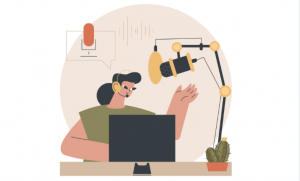Opening your dream café is more than a romantic vision of steaming espresso and cozy interiors. It is a strategic journey that requires planning, dedication, and financial foresight. Many people fantasize about escaping the life of white-collar jobs, trading in boardroom meetings for café counters.
Many new café owners share a common origin: a stable job with decent pay, yet a lack of personal fulfillment. The desire to build something of your own, set your own hours, and create a warm environment that reflects your personality can be a powerful motivator.
But transitioning from a salaried job to entrepreneurship involves risk. The regular paycheck disappears. You face unstable income, competition, and operational responsibilities. To navigate this shift, the foundation must be built on strategic money management.
Start Small, Think Big: The Snowball Effect
You do not need a large capital or a major bank loan to get started. Many entrepreneurs began with small capital and gradually scaled up. The idea is to build momentum.
Start by:
- Saving aggressively: Track your monthly expenses and cut non-essentials.
- Earning side income: Freelancing, consulting, or tutoring can help you set aside seed money.
- Reinvesting profits: Let your initial savings work for you through investing or trading.
This snowball effect is what enables small capital to grow into a launch-ready fund over time.
Budgeting for Your Dream Café
Once you decide to pursue your café vision, it is important to map out your financial needs. Typical costs include:
- Rental deposit or property purchase
- Renovation and interior design
- Espresso machines, grinders, and kitchen equipment
- Inventory and suppliers
- Licenses, insurance, and legal fees
- Staff wages and training
- Marketing and branding
Create a realistic projection of your startup costs and running expenses for at least the first 12 months. This will help you define your funding goal and guide your financial strategies.
Investing and Trading: Tools to Grow Your Capital
You may not have the capital you need at the start. However, you can make it happen by working on what you already have. You would need your money to grow beyond a savings account. This is where financial instruments like investing and trading come in.
Trading Forex or Stock CFDs
It is common for entrepreneurs to start with short-term trading as a way to build capital. Forex trading, or trading stock CFDs (Contracts for Difference), offers potential for returns through price movements, but it comes with risks.
- Forex trading allows you to speculate on the movement of global currencies.
- Stock CFDs let you trade the rise or fall of stock prices without owning the asset.
These can be powerful tools if approached with discipline and education. Start with demo accounts, understand the market dynamics, and always use risk management techniques such as stop-loss orders.
If you are thinking of getting in there, consider working with regulated platforms that provide educational resources, economic calendars, and technical analysis to help you make informed decisions.
Long-Term Investment Alternatives
If short-term trading feels too volatile, long-term investing may be more suitable. Consider:
- Dividend-paying stocks that generate passive income.
- Index funds or ETFs that offer diversified exposure.
- Commodities like gold can act as hedges during uncertain times.
A well-balanced portfolio may help you accumulate the capital required for your café while reducing volatility.
Managing Your Own Money Like a Business
Owning a café is not just about coffee and ambience; it is about running a business. Before managing a café budget, practice managing your personal finances with the same discipline.
Key habits include:
- Tracking income and expenses
- Using financial apps or spreadsheets
- Setting aside emergency and reinvestment funds
- Avoiding unnecessary debt
This self-discipline translates directly into your future role as a café owner and increases your chances of long-term success. In your white collar business life, if you have management experience and budget handling, you are at an advantage.
Creating Your Café Brand and Concept
While saving and growing your capital, start building your dream café on paper. This part is the most fun because you're really making your dreams real. Ask yourself these questions and come up with a ready plan:
- What kind of atmosphere do you want?
- Who is your target audience?
- Will you serve specialty coffee, breakfast items, or baked goods?
- Will your theme be cozy, minimalist, vintage, or tropical?
A strong concept gives you direction, helps you stand out, and inspires your journey. Start curating mood boards, scouting locations, and writing a business plan. This phase is free and fun, yet incredibly productive.
The Reward: Independence and Creative Freedom
When your dream café finally opens, you will experience a shift that goes beyond financial gain. The satisfaction of seeing customers enjoy your space, the ability to create a menu that reflects your taste, and the pride of building something from scratch are priceless. Also, it'll be yours truly.
Moreover, you gain:
- Independence from traditional employment structures
- A space that reflects your personality
- The potential for passive or semi-passive income through expansion or franchising
Dream Café, Real Plan
Opening your own café is a journey that blends creativity with financial discipline. It starts with a desire to leave the corporate world and is sustained through consistent effort and smart money management. Whether you grow your capital through trading, investing, or saving with intent, the goal is the same: to bring your dream café to life.
Start small, stay consistent, and keep learning. Use financial tools wisely, maintain discipline, and you can serve that first cup of coffee in your very own café sooner than you think.






